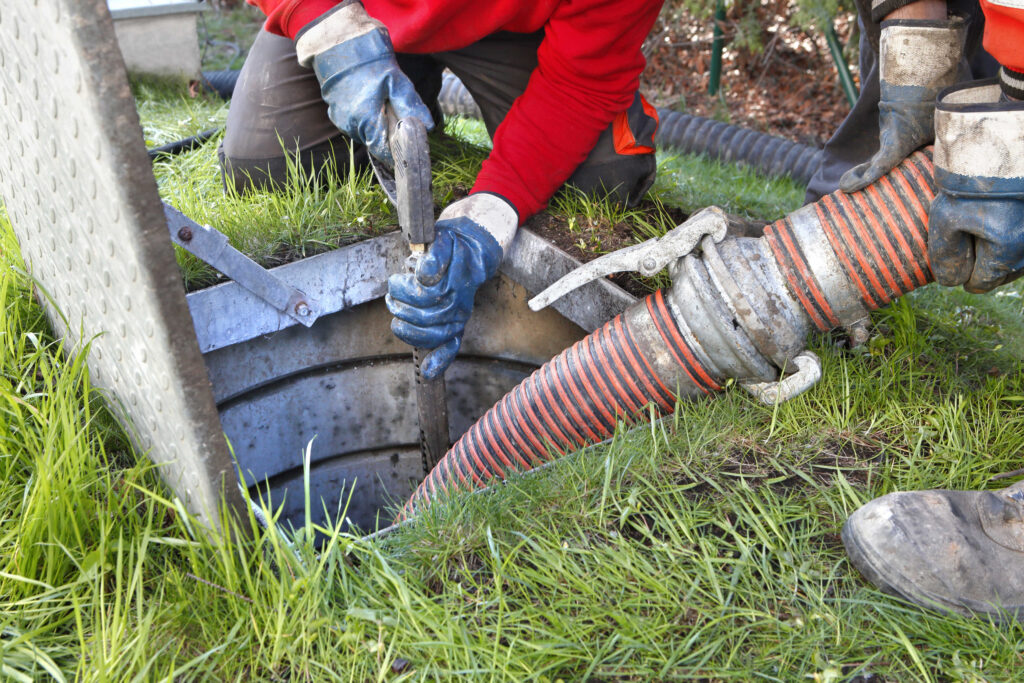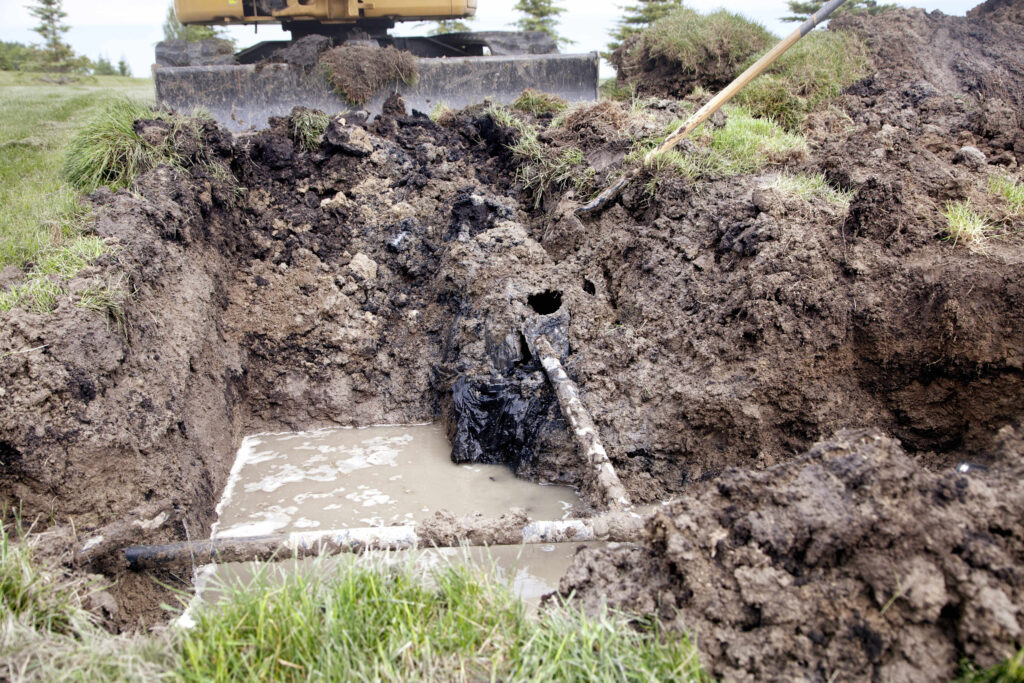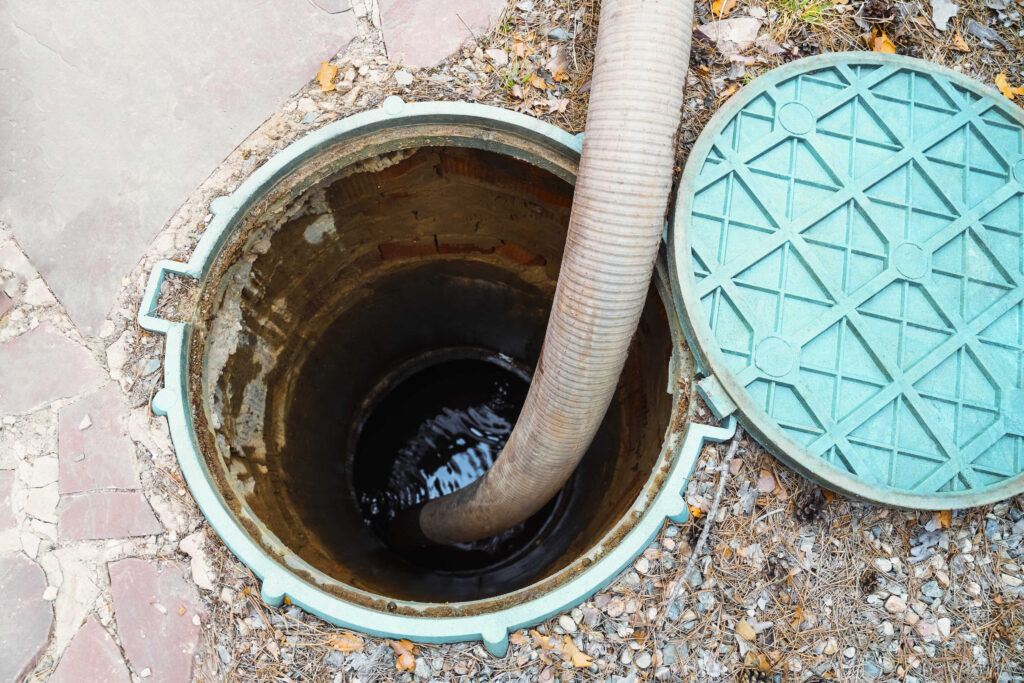
If you live in a rural area or community not connected to a centralized sewer system, then you likely rely on an underground, onsite septic system to treat and disperse wastewater from your home. Many homeowners, though, don’t really understand how these independent sewer systems work—or why periodic maintenance is crucial.
In this beginner’s guide to septic systems, we’ll walk through the key components, how wastewater gets purified and disposed of, what proper upkeep involves, warning signs of trouble, average septic repair and replacement costs, and answers to other commonly asked questions.
Whether your septic system was installed last month or decades ago, arming yourself with this foundational knowledge can help ensure it operates efficiently for years to come.
How Do Traditional Septic Systems Work?
A septic system’s job is to collect all wastewater from your home (sinks, showers, toilet, laundry, etc.), filter out solids and impurities, and allow liquids to drain away into the surrounding soil.
Key components include:
Septic Tank
The central chamber of your septic system is the actual septic tank. A large, buried container made from concrete, fiberglass or polyethylene, this is where the first phase of wastewater treatment occurs. All water from your home drains into it. Heavy solids settle to the bottom forming a sludge layer, while fats and oils float to the top as scum. Naturally occurring anaerobic bacteria help break down and decompose a portion of these solids. Screens trap thicker debris to prevent outlet pipes from clogging.
Distribution Box
After partially treated effluent leaves the main septic tank, it flows into a distribution box—a small component responsible for splitting wastewater evenly into multiple underground trenches packed with a sand or gravel media known as the drainage or leach field.
Perforated Pipes
These perforated plastic pipes then transport the clarified effluent throughout your soil’s absorption area (drain field) for final filtration and dispersal. The porous openings allow liquid to drain out the sides into surrounding layers of gravel and soil.
Soil Absorption Area
This unsaturated subsurface zone receives the filtered wastewater where natural biological processes, evaporation and absorption into soil particles provide final treatment and dispersal. Microbes digest additional contaminants like bacteria, viruses and nutrients over periods of years. The size and design of your drain field depends on estimated household wastewater output and native soil characteristics.
Septic System Diagram
Credit: US EPA Onsite Wastewater Treatment Systems Manual
How Often Should Septic Tanks Be Pumped?
As the main receptacle accepting all your home’s wastewater, septic tanks need periodic pumping to remove accumulated sludge and scum once volumes start encroaching on the tank’s working capacity. If not removed, solid buildup can migrate into drain lines and clog the leach field.
Professional standards suggest inspecting septic tanks at least every 3 years to check fluid levels and sludge/scum accumulation. However pumping frequency varies based on usage and household size:
- 1000+ gallon tanks –> Every 3-5 years
- 750-1000 gallon tanks –> Every 2-3 years
- Smaller tanks –> Annually

Warning Signs Your Septic System Needs Attention
Catching problems early helps minimize repair costs and prevent catastrophic failures. Watch for these common red flags:
- Sewage surfacing or ponding over the drain field
- Plumbing backups, slow drains or gurgling sounds
- Lush, green growth over the tank or leach field
- Strong sewage odors around septic pipes or tank
- Failed annual inspections
A professional contractor can troubleshoot issues and advise if pumping alone is sufficient or fuller repairs to damaged plumbing or clogged soil beds may be needed.
Why Routine Septic Maintenance Matters
When operating properly, septic systems provide economical, environmentally-friendly wastewater treatment. But neglecting routine maintenance nearly always requires expensive emergency repairs down the road. By having tanks routinely pumped and conducting annual system checkups, common recommendations include:
- Inspecting sludge/scum levels in the tank
- Checking for leaks, blockages or cracked pipes
- Ensuring vents and manholes are clear
- Flushing drain lines
- Evaluating any distribution box flow issues
- Testing functionality of pumps, control floats and alarms
- Examining the soil absorption field for ponding or odors
- Sampling inlet/outlet bacteria levels for comparison
Avoid overloading your system with excess water or additives that may disrupt biological processes. Spread out laundry and dishwasher cycles rather than running simultaneous, heavy loads. Limit use of garbage disposals and caustic drain openers. Don’t drive vehicles over your system or let roof drains direct runoff towards its location. Divert stormwater flows with downspout extensions. Maintain stable slopes around your leach field to minimize soil erosion. Keep detailed system records for reference during troubleshooting situations or real estate transactions.
Consider supplemental disinfection or advanced treatment stages if wastewater requires additional pathogen removal prior to surface discharge—especially for commercial applications or ecologically sensitive sites. In rural locations with porous soils and favorable drainage, basic septic systems often sufficiently eliminate bacteria and viruses once effluent filters through just a few feet of unsaturated sediments.
How Much Does It Cost To Repair or Replace a Septic System?
When septic issues arise, professional diagnosis of any structural damage is always the prudent first step before investing in solutions. Once the root problems are identified, typical costs for repairs include:
- Emergency septic pumping: $250-$500
- Minor plumbing repairs: $200-$2,000
- Tank repairs: $400-$3,000
- Full drain field repairs: $2,000-$20,000
- Full septic system replacement: $5,000-$40,000
Replacement costs vary widely based on system size, layout, soil conditions, permitting factors and the cost of labor, equipment and materials in your geographic region. Homeowners can reduce expenses greatly by tackling basic upkeep themselves before deterioration escalates.

FAQs About Onsite Sewage Systems
Here are answers to some other common questions homeowners have regarding septic tanks and leach fields:
How do I locate my septic tank or leach field?
Consult your property plat for permitting records with locations denoted or use visual clues, pipe alignments, meter readings or professional leak detection services to deduce their placement if building plans are unavailable. Use extreme caution when excavating unknown equipment.
What can and cannot go into septic systems?
Follow basic trash disposal guidelines. Avoid inorganic solids like grease, cigarettes, diapers, sanitary products, paper towels, coffee grounds and toxic chemicals which can clog and disrupt microbial processes. Use of garbage disposals is controversial; some experts advise avoiding altogether.
Why does my neighbor need his tank pumped less than I do?
Frequency depends on tank capacity, household occupancy, water usage habits, and whether garbage disposals are present. Large families and systems with reduced working capacity due to excessive solids require more frequent pumping.
Can failing septic systems be repaired or do they always need full replacement?
Surface failures with no structural damage often require only plumbing repairs or drain field restoration without replacing the tank. However chronic issues will eventually warrant full new system installation.
We hope this beginner’s guide to septic system fundamentals proves useful. Please reach out with any other questions—we’re happy to help residents in our community better understand and care for their essential onsite wastewater treatment equipment.